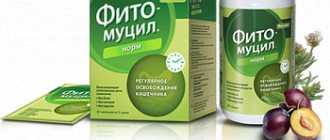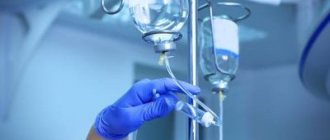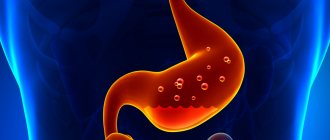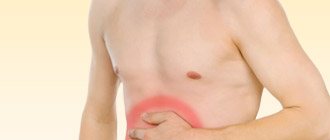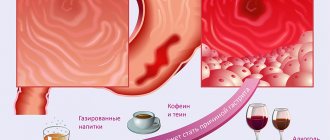Chronic gastroduodenitis, what is it? Symptoms and treatment
Chronic gastroduodenitis is a combination of inflammation of the stomach and duodenum in a chronic form, accompanied by a change in the structure of the mucous membrane, a violation of motor-evacuation and secretory functions. There are several types of disease.
According to changes in the mucous membrane, chronic gastroduodenitis can be atrophic, hypertrophic, superficial and erosive. According to the acid-forming function - with high and low acidity. According to the intensity of inflammation - mild, moderate and severe.
During chronic gastroduodenitis, there are remissions and exacerbations.
Causes
There are a number of reasons why chronic gastroduodenitis may occur. If the cause is diseases of the internal organs, then they speak of a secondary form of the disease. If the development of the disease is influenced by external factors or poor nutrition, then doctors diagnose “primary gastroduodenitis.”
The secondary form is caused by the following factors:
- constant stress;
- dysfunction of the nervous system;
- low immunity;
- taking antibiotics;
- intestinal infections;
- diseases of the gallbladder and gastrointestinal tract.
Chronic infectious diseases also cause inflammation of the mucous membrane. Caries, tonsillitis and stomatitis must be treated promptly, because infections from the oral cavity enter the stomach. Sometimes the chronic form appears with reflux syndrome, when bile is thrown into the stomach.
The primary form is called:
- exposure to chemicals and poisons;
- poor nutrition and irregular diet (abuse of spicy, salty and smoked ingredients);
- bad habits, including drinking alcohol;
- eating hot or cold food.
Heredity also plays a big role. Genetic predisposition should be taken into account when making a diagnosis. Gastroduodenitis with high acidity often has an infectious etiology of origin. The inflammatory process is caused by Helicobacter pylori.
The main reasons for the development of gastroduodenitis
Superficial gastroduodenitis - inflammation of the gastric mucosa
The main reason for the development of this pathology is poor nutrition. Most people who include fatty, fried foods, an abundance of spices, and hot seasonings in their diet sooner or later encounter this disease. This also leads to eating dry food, eating pickled foods and smoked delicacies. In addition to dietary factors, other unfavorable aspects affect the development of gastroduodenitis:
- bad habits;
- stress;
- working in hazardous conditions;
- long course of treatment with certain anti-inflammatory drugs;
- diseases of the liver, as well as biliary and urinary tracts;
- bacterium Helicobacter pyloricus;
- penetrating radiation exposure;
- allergy;
- family predisposition.
The process of development of gastroduodenitis is complex. Basically, the disease begins as a result of an imbalance in the mechanisms of adaptation and compensation. This is also facilitated by disturbances in the functioning of the hypothalamic-pituitary-gastroduodenal connections. In childhood, this disease can develop due to the fact that the body experiencing stress has not yet developed properly at the morphological level. If gastroduodenitis is provoked by Helicobacter pylori infection, then the mechanism of development of the disease will be somewhat different.
Bacteria aggressively affect the mucosa, leading to its destruction, slower repair, and destruction of the mucous-bicarbonate barrier. Bacteria secrete substances that make hydrochloric acid almost neutral; they also stimulate the G-cells of the stomach, so the synthesis of hydrochloric acid and gastrin increases.
Classification
There is no uniform classification of the disease. This is explained, in addition to the many approaches to explaining the causes and assessing the morphological picture of the disease, also by the fact that in a number of countries the diagnosis of “chronic gastroduodenitis” is not used.
The most common forms of the disease are:
By origin:
- primary (developing without connection with previous pathology);
- secondary.
According to the presence of Helicobacter pylori: H. pylori-associated and non-associated.
According to the prevalence of the pathological process:
- gastritis [limited (antral or fundic), widespread];
- duodenitis (limited (bulbit), widespread).
According to the nature of the acid-forming and secretory functions of the stomach:
- with increased function;
- with saved function;
- with hypofunction.
According to the morphological signs of damage to the stomach and duodenum:
- superficial, hypertrophic, erosive, hemorrhagic, subatrophic, mixed (determined endoscopically);
- superficial or diffuse (without atrophy, subatrophic, atrophic) (determined histologically).
Depending on the stage of the inflammatory process, chronic gastroduodenitis can be in the acute phase, incomplete clinical remission, complete clinical remission, clinical-endoscopic-morphological remission (recovery).
Symptoms of superficial gastroduodenitis
There may not be acute manifestations of the disease with minimal inflammation. The most striking symptom is aching abdominal pain. They appear after eating and as a result of poor nutrition, radiating to the navel and under the right rib.
Other symptoms of superficial gastroduodenitis:
- Dyspepsia;
- Heartburn;
- Belching of sour stomach contents;
- White coating on the tongue;
- Unpleasant taste and odor from the mouth;
- Alternating constipation and diarrhea;
- Increased salivation;
- General weakness and irritability – sleep disturbances, headaches.
When dyskinesia and duodeno-gastric reflux appear, the balance of acidity in the stomach is disturbed, and bile backflows from the duodenum into the stomach. Because of this, bitter belching of bile, heartburn, and a feeling of heaviness occur.
As the disease progresses and atrophic changes appear, a deficiency of vitamins A, C, and B develops.
Symptoms
The chronic form of gastroduodenitis can make itself felt within six months. That is, during this time mild symptoms may be observed. Then an exacerbation develops. In this case, the symptoms become pronounced. An exacerbation attack can be triggered by stress, consumption of spicy, salty, fatty, fried foods, and alcohol. Moreover, exacerbation is observed in spring and autumn.
Superficial chronic gastroduodenitis during remission is characterized by aching pain in the stomach and navel. Pain is the main symptom. Nausea and vomiting may occur, especially if a person eats fatty or salty foods. Sometimes there is a violation of the stool - diarrhea is replaced by constipation. Heartburn and belching occur. If you follow a diet, pain and other symptoms will be less pronounced.
When an exacerbation occurs, the pain becomes sharp and sharp. They can be so strong that a person is twisted in half. The ulcerative form is characterized by vomiting with blood. This indicates internal bleeding. This condition requires immediate hospitalization because the ulcer may perforate. This is fraught with peritonitis. The condition is extremely life-threatening. During the period of exacerbation, a person not only experiences pain, but also the skin turns pale, bad breath appears, and belching with a sour or bitter taste appears. You may feel dizzy. Some patients even fainted.
Manifestations
Symptoms of gastroduodenitis in adults depend on the extent of the inflammation process. Based on the pain that bothers the patient, it can be assumed that the stomach or duodenum is predominantly affected.
“Stomach” pain appears almost immediately after eating and is localized on the left side and in the center of the epigastrium. With increased acidity, they are relieved by eating (acid binding occurs). The character is aching and bursting.
Duodenitis is expressed by hunger and night pain
Pain occurs 1.5 hours after eating. Localized on the right side of the epigastrium, in the navel area. Digestive disorders due to gastroduodenitis are manifested by dyspeptic syndrome with sour belching, nausea, heartburn, bitter vomiting, and changes in stool.
In the clinical course there are:
- acute form - if the disease lasts up to three months;
- exacerbation phase in a chronic process;
- incomplete remission lasting no more than two weeks;
- complete remission - in cases where there are no signs of pathology for several years, but when foci of inflammation are detected on gastroduodenoscopy;
- recovery, which is confirmed by examination.
In the acute form, the pain syndrome is much more pronounced, the infection causes a rise in temperature, and general symptoms of intoxication (weakness, dizziness, headaches).
Chronic inflammation with gastroduodenitis occurs in waves, the severity of symptoms is less intense. Patients are concerned about:
Exacerbation of gastroduodenitis
- constant feeling of heaviness and fullness in the stomach;
- aching pain is difficult to associate with lunch or breakfast, can occur after 2.5 hours, is relieved after artificially induced vomiting;
- sometimes the only manifestation is heartburn and belching, they decrease after eating, then bother again;
- appetite is unchanged or increased;
- unpleasant taste in the mouth;
- stool disorders (diarrhea is replaced by prolonged constipation);
- smell from the mouth.
During the acute stage, all signs become more intense. Patients with chronic gastroduodenitis are characterized by changes in character over the years. They are characterized by increased irritability, tearfulness, short temper, and poor sleep. They often become the cause of conflicts in the workplace and in the family.
The plaque is thick, despite the copious secretion of saliva
When examining a patient with gastroduodenitis, the doctor sees the tongue coated with a white thick coating and pale skin. Pain in the area of maximum pain is determined by palpation. There is no tension in the abdominal muscles. You can read about the clinical course of gastroduodenitis in childhood in this article.
Diagnostics
The appearance of signs of inflammation of the digestive organs requires immediate consultation with a doctor. Otherwise, the disease will become chronic and it will be much more difficult to cure. The disease is diagnosed based on complaints, external examination of the patient, palpation of the epigastric (upper abdomen) and umbilical area.
Additionally carried out:
- Determination of gastric juice acidity.
- Antroduodeal manometry. Examines gastric motility.
- Histological examination. Performed to analyze the characteristics of inflammatory processes and structural changes. Cells from the stomach and intestinal wall in the affected area are collected. It is prescribed mainly for chronic diseases of ulcerative and atrophic forms.
- Endoscopic examination. A thin probe equipped with a video camera is inserted into the stomach. It is used to examine the organ and identify the presence and localization of pathological processes.
- Detection of bacterial infection (Helicobacter pylori). It is carried out using a breath test, bacterioscopy, and histology.
- X-ray. It is performed by filling the stomach with a contrast agent. Allows you to get a detailed picture of the processes occurring in it.
- Ultrasonography. Shows the condition of the inner surface of the stomach and the degree of development of pathology. Often used to control relapses of the disease.
Chronic gastroduodenitis has less pronounced symptoms and requires longer-term drug therapy than acute gastroduodenitis. It will not be possible to cure this form of the disease completely, but the period of remission can be significantly extended (sometimes by several years).
Traditional methods of combating gastroduodenitis
Herbal infusions for the treatment of gastroduodenitis
The disease can be treated quite successfully with traditional folk remedies. In general, the condition in chronic forms can be corrected exclusively with folk remedies. Medicines are usually ineffective in this case. In addition, folk remedies do not produce unpleasant side effects.
Herbal infusion No. 1
Compound:
- chamomile;
- yarrow;
- St. John's wort
Herbs are taken in equal quantities and mixed. From the total mass, scoop one tablespoon of the herbal mixture and pour a glass of boiling water. Leave for 20 minutes. Take half an hour before meals 3 times a day. Treat in this way for 2 weeks.
Herbal infusion No. 2
Compound:
- chamomile;
- yarrow;
- cottonweed;
- caraway;
- knotweed;
- valerian root;
- Dill seeds;
- hop.
Herbs are taken in equal quantities and mixed. Then 2 tablespoons are poured with boiling water in a thermos and left for 8 hours. You will need half a liter of boiling water. Drink 4 times a day 20 minutes before meals.
Herbal infusion No. 3
Compound:
Treatment
Since the duodenum plays an important role in the digestive system, its inflammation is particularly dangerous. Gastroduodenitis, as written above, affects not only the stomach, so it is worth preventing, but if the blow has already been taken, you need to start fighting it in every possible way.
Treatment of chronic gastroduodenitis is accompanied by the following measures:
- anti-inflammatory therapy;
- restoration of the secretory functions of organs involved in the digestive process;
- normalization of bile intake and secretion;
- eliminating imbalances in the nervous system, gastric lining and duodenum.
Thanks to modern treatment methods, it is possible not only to eliminate symptoms, but also to restore the health of the gastrointestinal tract, normalize digestion and absorption of food. Therapy is often carried out against the background of eliminating concomitant diseases.
- If there is low acidity, instead of antisecretory drugs that are aimed at producing hydrochloric acid. Regardless of the form, antacids are prescribed: Phosphalugel, Almagel, Maalox. For vomiting and flatulence, prokinetics are prescribed (Cerucal, Motilium). They restore the movement of the food bolus, eliminating painful symptoms.
- For diseases with high or normal acidity, proton pump inhibitors are used. These include Omeprazole, Rabeprazole, Neximum. There are other drugs that reduce the production of hydrochloric acid, reducing the acidity of gastric juice. Usually one medication is chosen for treatment.
If chronic gastroduodenitis is caused by a bacteria, then antibacterial drugs must be included in the treatment regimen.
Gastritis and gastroduodenitis
Gastritis, duodenitis and gastroduodenitis are diseases of the gastrointestinal tract and digestive system as a whole, caused by dystrophic changes and inflammatory processes caused by various pathologies and causes.
Gastritis is a disease of the stomach that affects its mucous membrane, as a result of which the main secretory functions of the organ are disrupted.
Duodenitis is a disease of the duodenum, in which inflammatory changes are localized on its mucous membranes. As a rule, duodenitis in its “pure” form is less common than gastroduodenitis, since it is accompanied by stomach problems, so we will not consider it in detail separately.
Gastroduodenitis is a disease localized in the pyloric zone of the stomach and duodenum, characterized by degenerative processes and inflammation of the mucous membrane; it is often called mixed gastritis.
Now we can draw a conclusion about the similarities and differences between these diseases.
Similarities:
- all diseases affect the organs of the gastrointestinal tract and disrupt their functioning;
- characterized by damage to the mucous membrane, are inflammatory and dystrophic in nature
- have similar causes.
Differences:
- only in the localization of damage to mucosal tissue; gastritis - a disease of the stomach, gastroduodenitis - the stomach and duodenum;
- Of course, the severity of certain symptoms also differs in different patients.
As can be seen from the above facts, gastritis and gastroduodenitis are similar, so they are combined into a common group of diseases and treated according to general principles. And now a little more about these diseases.
Gastritis
The following types are distinguished:
- spicy;
- chronic.
Acute are divided into:
- catarrhal;
- fibrinous;
- corrosive;
- phlegmous.
Chronic are divided into:
- autoimmune (type A);
- bacterial (type B);
- reflux (type C);
- eosinophilic;
- lymphocytic;
- erosive;
- radiation;
- superficial.
Duodenitis
Duodenitis, similar to gastritis, is divided into acute and chronic. They are also:
- catarrhal;
- erosive-ulcerative;
- phlegmous;
- limited;
- widespread.
Gastroduodenitis
Since this disease is a form of gastritis, the types and symptoms are very similar. Gastroduodenitis can also be acute and chronic. In the second type, the secretory and motor functions of the affected area are disrupted, as a result of which the gastric mucosa is completely changed.
Types of gastroduodenitis according to various characteristics:
- primary;
- secondary;
- common;
- localized;
- reflux;
- with normal acidity;
- with high acidity;
- with low acidity.
https://www.youtube.com/watch?v=3ezdBlFt16A
Diet and nutrition rules
Proper nutrition is of utmost importance for gastroduodenitis. During remission, it is necessary to exclude the following foods from the diet:
- alcohol;
- strong broths;
- fatty meat, poultry and fish;
- spicy dishes (mustard, pepper, horseradish, garlic, etc.);
- strong coffee and tea;
- marinades, smoked meats, etc.
The basis of nutrition should be soups (with a second broth), lean meat, poultry, lean fish, cereals, vegetables and fruits. Products can be boiled, stewed, steamed or baked. In the acute stage, nutrition should be mechanically, chemically and thermally gentle. You can prepare liquid milk porridges, pureed soups with vegetable or weak meat broth, jelly, and compote. All dishes should be eaten warm.
Symptoms of gastroduodenitis in children
Quite often, involvement of other organs (intestines, gallbladder, pancreas) in the process is observed, which greatly complicates differential diagnosis. The severity of symptoms of the disease in children is at a much lower level. All other aspects correspond to those in adults.
Pain in children usually occurs in the form of contractions. More often there is sleep disturbance, pallor, “bruises” under the eyes, loss of appetite, weight loss, mental instability, fatigue and retardation in physical development, brittle nails and hair loss (signs of hypovitaminosis), stool instability (constipation is replaced by diarrhea). Children with gastroduodenitis often experience autonomic disorders:
- vegetative crises that occur like dumping syndrome, causing drowsiness after eating;
- tachycardia (increased number of heartbeats);
- vascular instability;
- increased sweating;
- with a long gap between meals, signs of hypoglycemia may appear, dizziness, sweating, weakness, muscle tremors, and in exceptional cases, loss of consciousness may occur.
Exacerbations in adults and children are seasonal (autumn and spring). Their onset is provoked by neuropsychic or physical stress, and errors in nutrition.
Prognosis and prevention
Symptoms of gastroduodenitis are a serious reason to immediately begin treatment for the pathology, which can only be prescribed by a qualified doctor. Therapy for a chronic disease is a long process that requires patience.
Prevention consists of following the basics of a healthy diet, avoiding stressful situations, giving up bad habits and regular fasting/overeating. In addition, to prevent chronic pathology, it is important to minimize the use of medications, especially antibiotics.
Incorrect or untimely treatment of chronic pathology will cause a relapse of acute conditions. As gastroduodenitis develops, the patient’s quality of life will deteriorate and general fatigue will increase. Often chronic pathology is aggravated due to non-compliance with the regularity of treatment with prescribed drugs, which in the future can lead to complications, including peptic ulcer disease.
Centrotherapy. How to improve treatment results?
The effectiveness of treatment of various diseases of the digestive system, including chronic gastritis and gastroduodenitis, can be significantly increased using a non-drug treatment method - centrotherapy. The method has been known for more than 100 years. Its high effectiveness lies in its healing mechanism.
As a result of treatment, the motility of the stomach and duodenum is normalized, inflammation fades away, manifestations of dyspepsia disappear (nausea, belching), and stool normalizes. Local immunity in the stomach and duodenum increases, thanks to which the body is able to more effectively fight Helicobacter pylori infection and other infectious pathogens. The uniqueness of centrotherapy is the possibility of simultaneous treatment of various concomitant diseases. In this case, side effects are excluded.
In some cases, centrotherapy can be either an independent treatment method or an additional one. A course of centrotherapy can be carried out during an exacerbation simultaneously with drug treatment or after completion of drug treatment. If side effects of drug therapy occur, for example, dysbiosis after antibiotics, centrotherapy can significantly minimize them and promote a speedy recovery of the body by normalizing the functioning of the immune system. Centrotherapy significantly reduces the recurrence of the disease after treatment.
In the article “Causes of peptic ulcer and central therapy. The truth about Helicobacter pylori” reveals in detail the essence of the therapeutic mechanism of centrotherapy in the treatment of diseases of the digestive system.
Treatment of gastroduodenitis in adults
The basic principles of treating gastroduodenitis in the acute period include creating physical and psychological peace. Meals should be frequent (5 - 6 times), but in small volumes. Products that cause increased secretion of gastric juice are excluded from the diet: fatty, spicy, smoked, fried, and also containing extractives, spices and large amounts of fiber. The principle of the diet for chronic gastroduodenitis outside the acute period is the same, but it is more expanded and less strict.
Since one of the key causes of gastroduodenitis is infection, treatment cannot be done without antibiotic therapy. Drugs of choice for the treatment of gastroduodenitis in adults:
- De-nol and metronidazole (course of treatment 10-14 days) + tetracycline antibiotics (course of treatment 7-10 days);
- Clarithromycin and omeprazole in combination with metronidazole (course of treatment 7 days);
- Metronidazole + amoxicillin (course of treatment 10 days) + ranitidine (2 times a day before meals for 2 weeks);
- The choice of treatment regimen depends on the characteristics of the course of gastroduodenitis. At the first symptoms of gastroduodenitis, consult a gastroenterologist for advice and treatment.
Outside periods of exacerbation, physiotherapeutic treatment, balneological and spa treatment, and the use (after consultation with a doctor) of infusions of medicinal plants are recommended.
